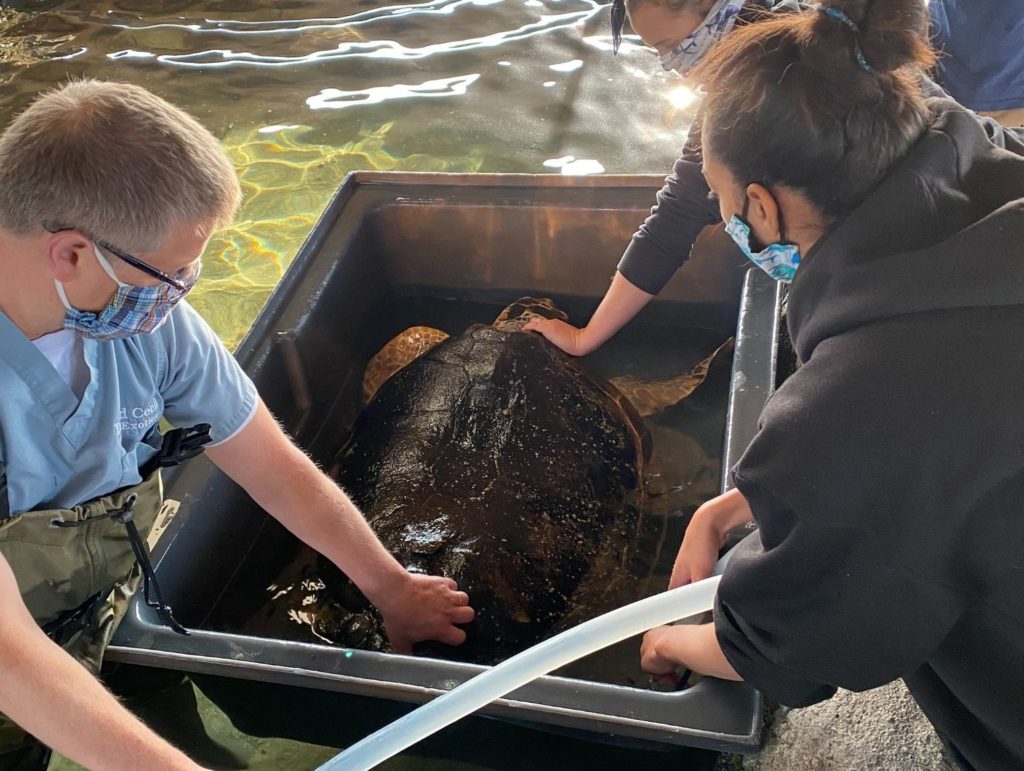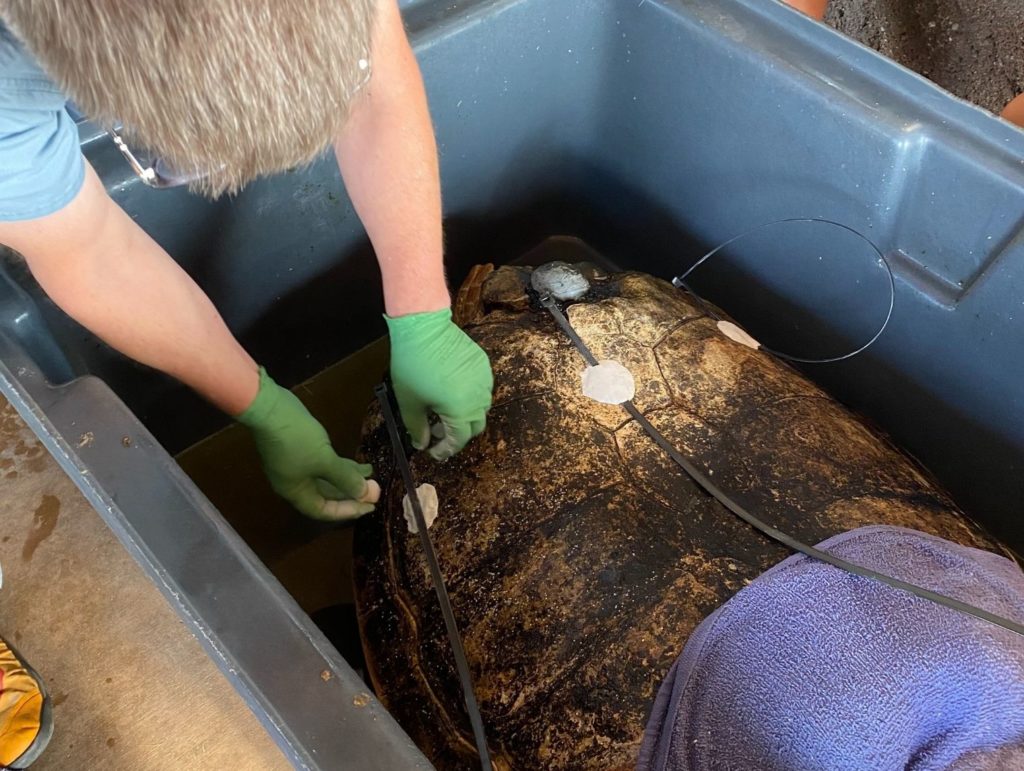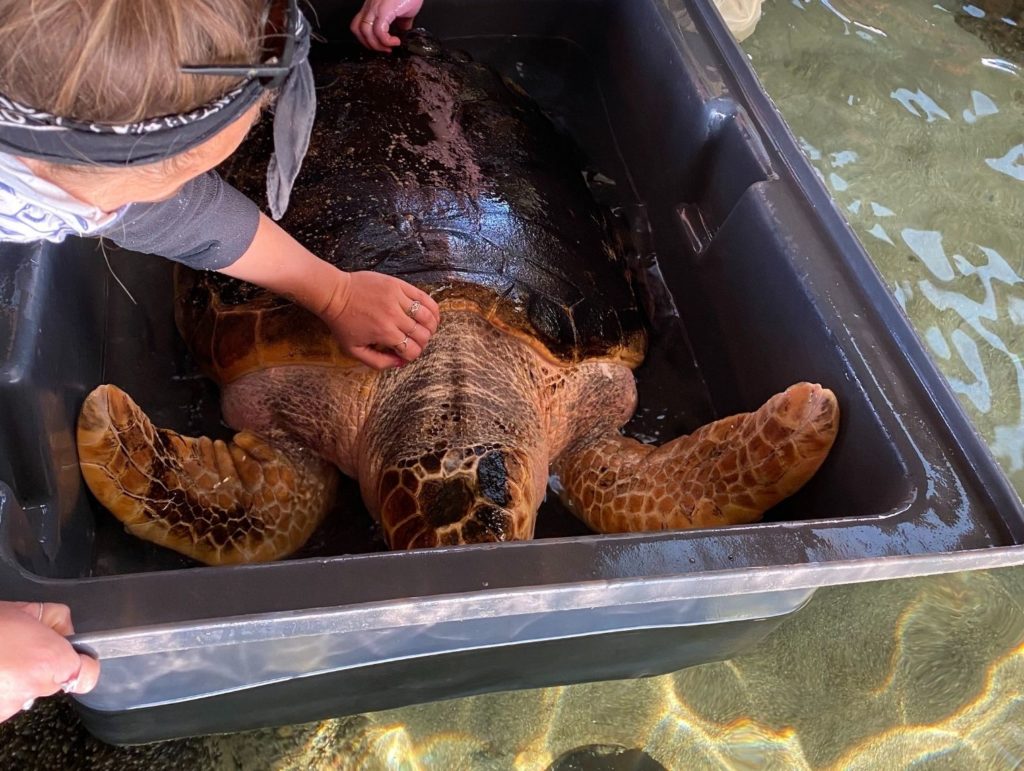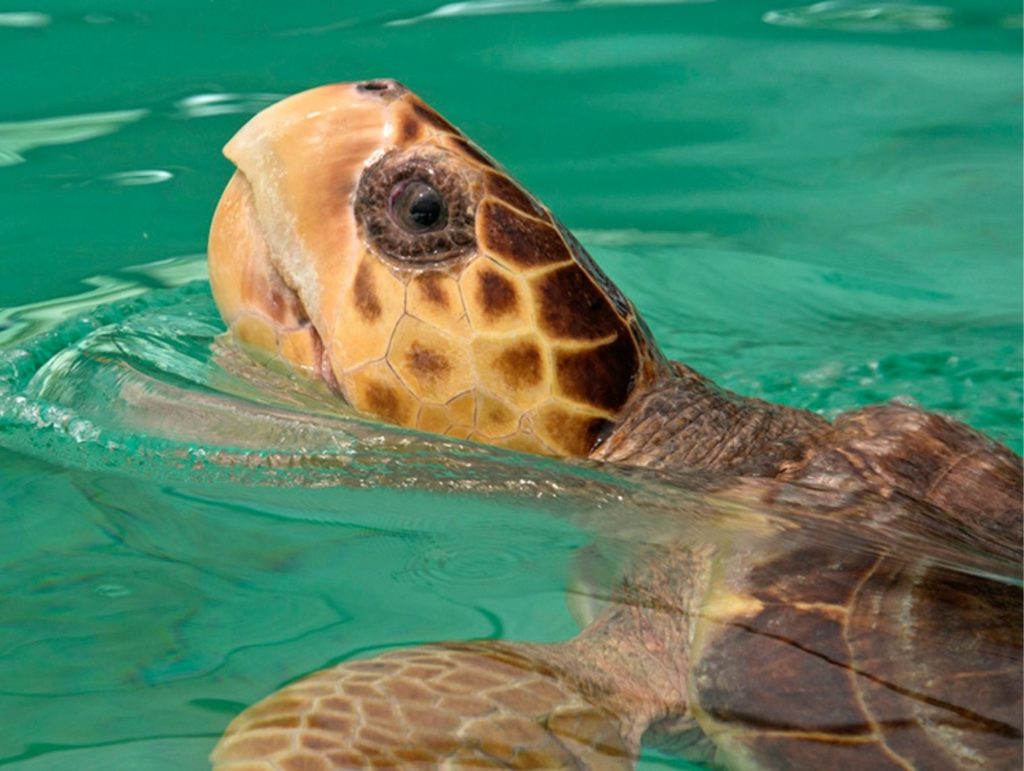Often called the gem of the Living Coast, Sapphire the loggerhead sea turtle attracts a lot of attention. She’s big, beautiful, and oddly buoyant. Sapphire is often found in a sort of turtle-headstand position due to her buoyancy challenges. Sapphire’s story begins in 2014 when she arrived at the Turtle Hospital in the Florida Keys with injuries consistent with a boat strike, leaving a large crack across her rear carapace, blindness in her left eye, and a severe buoyancy imbalance. As she was deemed non-releasable, Sapphire found her home with us since arriving in 2014.

Sapphire lifts weights, but not in a “get swole” way. Her buoyancy imbalance had to be corrected by gluing marine weights to her rear shell, allowing her the ability to surface and dive down at her leisure. But in April 2020, Sapphire’s buoyancy worsened, affecting her sleeping and eating habits. We made a plan to add more weights to her shell since she’s a growing turtle and will need constant modifications as she ages. But it wasn’t so simple.

Where do we put the weights? One day her buoyancy leans her right, the next day moreso left. Sometimes a little forwards or backwards. There didn’t seem to be a one-spot-fits-all option. And that’s what sparked an idea that could allow for flexibility. Instead of permanently gluing the weights, what if they were held in a wetsuit she was wearing so they could be added or removed as necessary? If you’ve ever SCUBA-dived, you’re familiar with the concept. Divers either wear weight belts or place weights in their wetsuits to allow them to sink. The team went to work.

A prototype was mocked with the willing help of a volunteer red-eared slider. Next step: make it a LOT bigger. Friends at O’Neill Wetsuits donated a sheet of Neoprene which was used to mock up a sea-turtle sized wetsuit fit with velcro and zip-tie pockets. After a fitting session, the template was sent back to O’Neill and a final design was sent over, custom fit for a gem.
Now to figure out the best weight placements. With the wetsuit in place, the team trialed weight locations for months, determining how much weight would go where and adjusting accordingly. To measure her successes, her activity levels and calorie intake was monitored, in addition to her “tilt”.
Finally, in December, the last weight was removed along with the wetsuit and Sapphire stood (or floated) horizontal, and swam straight! Success!

While Sapphire continues to grow, her buoyancy will change and she will most likely need to undergo “wetsuit therapy” again to help straighten her out. But we’re happy to report that Sapphire is eating well, swimming well, and isn’t currently performing any underwater gymnastics.
We would like to extend a very special thank you to our veterinarian, Dr. Todd Cecil at the Western Aquatic Animal Veterinary Services; Mark Massara, Brian Kilpatrick, Greg Clarke, and the rest of the team at O’Neill Wetsuits; and Terrie Williams at U.C. Santa Cruz.
